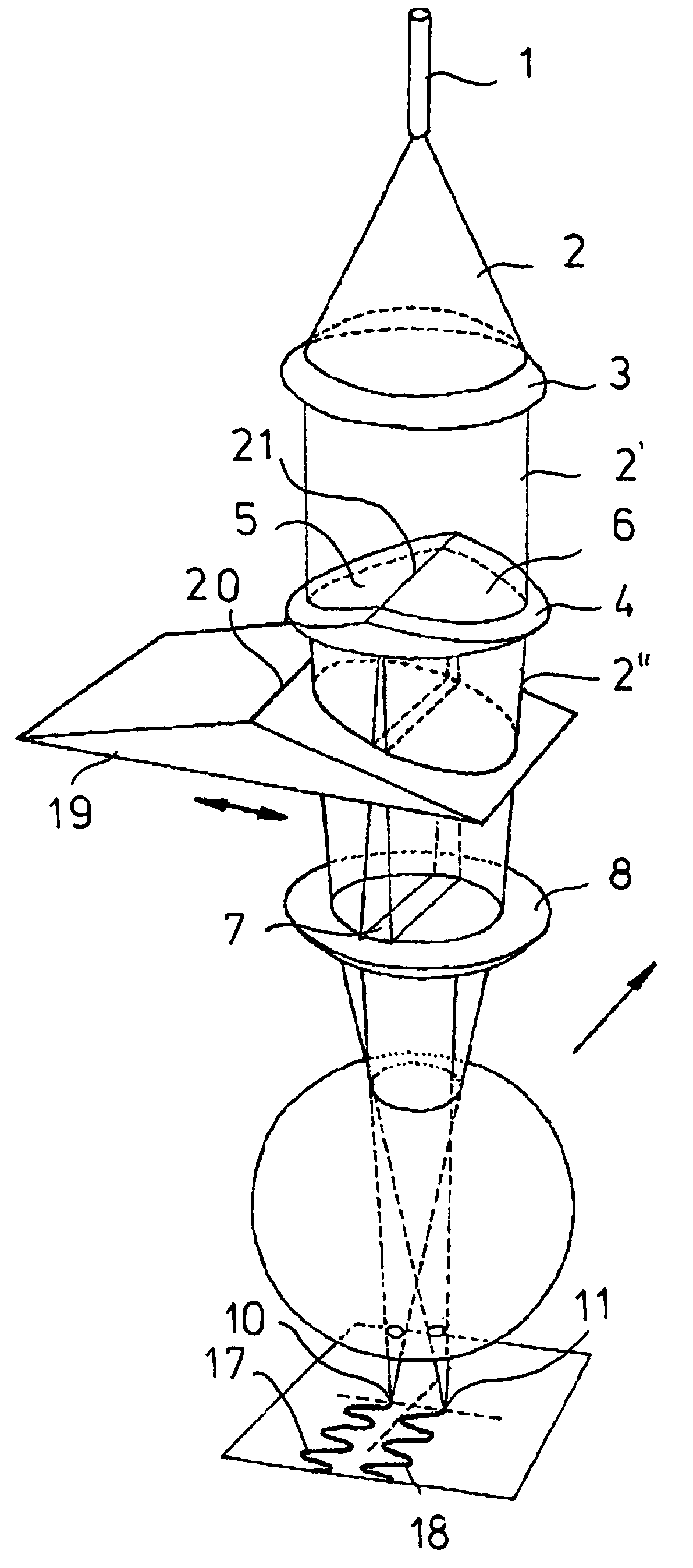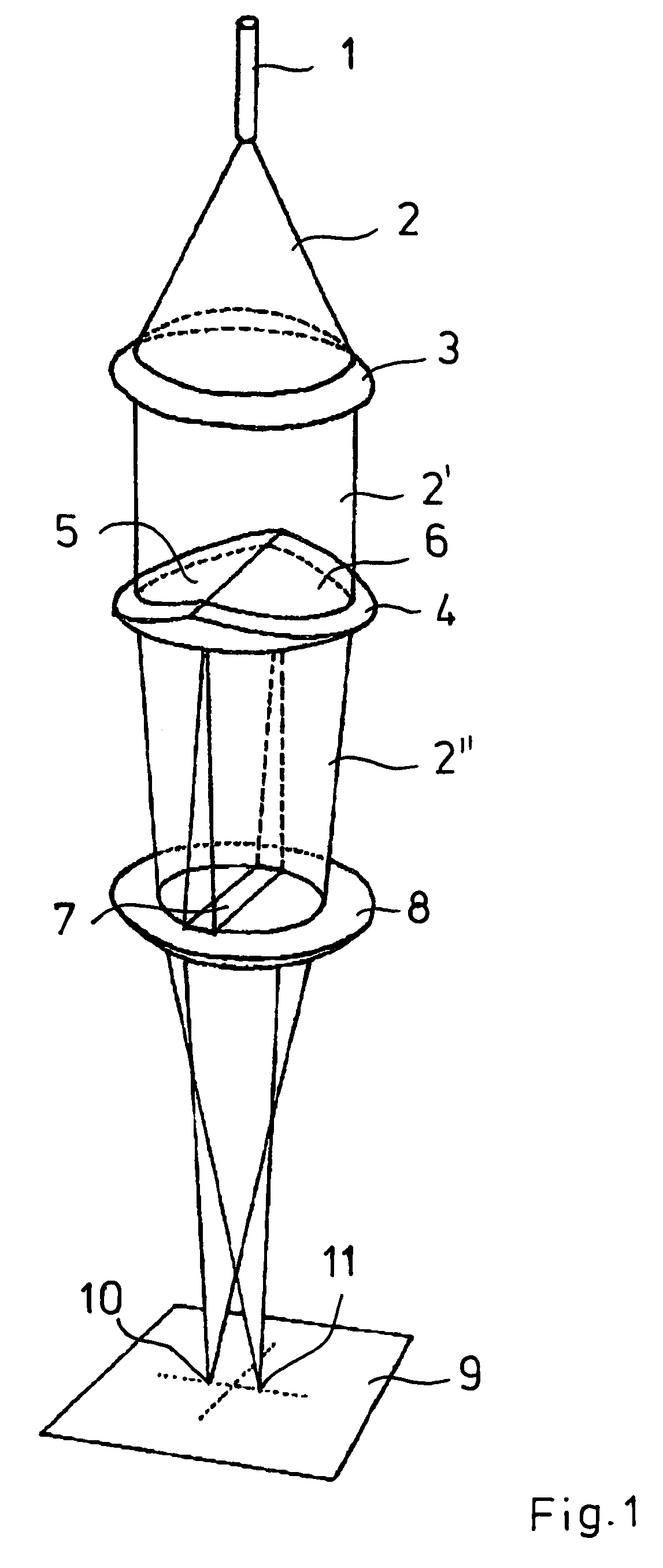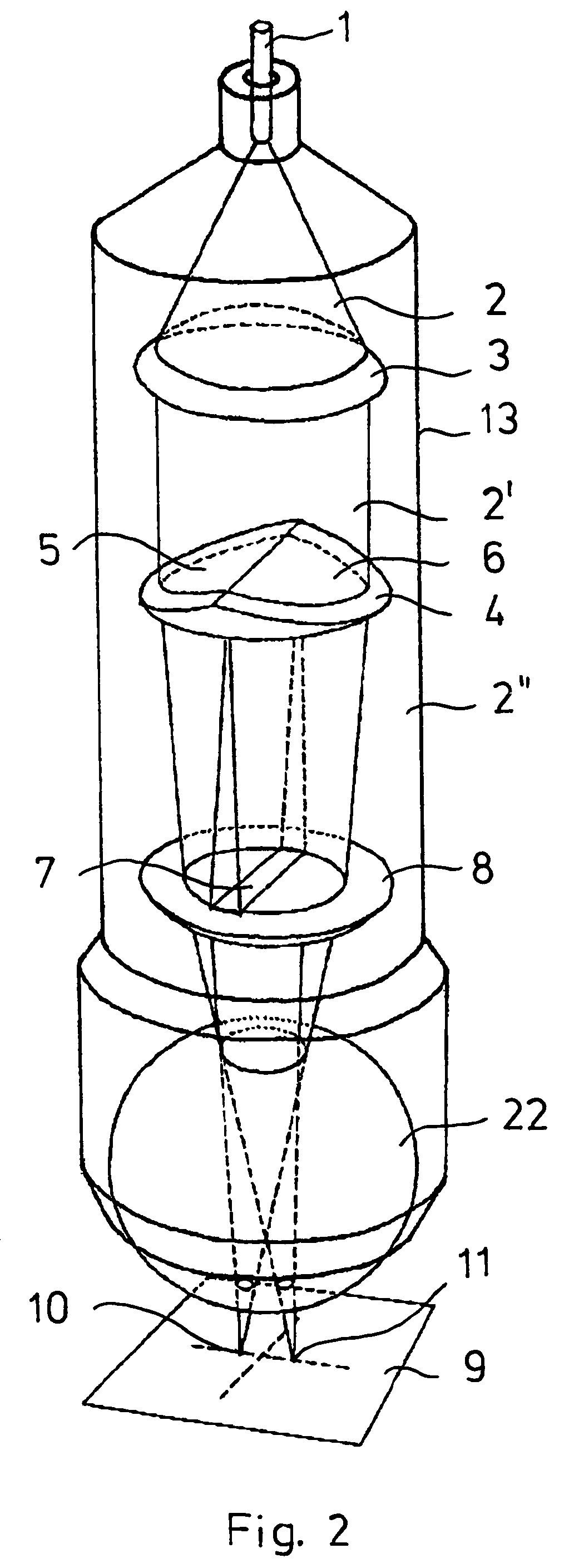Method and apparatus for heating plastics by means of laser beams
a laser beam and plastic heating technology, applied in laser beam welding apparatus, lamination, instruments, etc., can solve the problems of inability to apply methods, high space requirements, and relatively high costs, and achieve the effect of convenient handling
- Summary
- Abstract
- Description
- Claims
- Application Information
AI Technical Summary
Benefits of technology
Problems solved by technology
Method used
Image
Examples
Embodiment Construction
[0019]FIG. 1 shows an optical fiber 1 from which a laser beam 2 emerges. A lens 3 collimates the laser beam, which then strikes a double wedge plate 4. As is to be gathered from the figure, the wedges 5, 6 are arranged in such a way that the plane facing the collimated laser beam 2′ drops outward from the middle, and therefore the laser beam is slightly deflected toward the central optical axis. This is illustrated in the figure by the overlapping region 7 on the subsequent lens 8. The double wedge plate acts like two prisms arranged one against another which slightly deflect the laser beam along the light propagation direction. The radiation is split into two parts 2″, but still remains collimated, although it runs on in two different propagation directions. The converging lens 8 refocuses the two split rays onto a focal plane 9, where they are formed as two light points 10, 11. The wedge angle and the optical properties of the converging lens determine the distance between the two...
PUM
| Property | Measurement | Unit |
|---|---|---|
| angle | aaaaa | aaaaa |
| transparent | aaaaa | aaaaa |
| size | aaaaa | aaaaa |
Abstract
Description
Claims
Application Information
 Login to View More
Login to View More - R&D
- Intellectual Property
- Life Sciences
- Materials
- Tech Scout
- Unparalleled Data Quality
- Higher Quality Content
- 60% Fewer Hallucinations
Browse by: Latest US Patents, China's latest patents, Technical Efficacy Thesaurus, Application Domain, Technology Topic, Popular Technical Reports.
© 2025 PatSnap. All rights reserved.Legal|Privacy policy|Modern Slavery Act Transparency Statement|Sitemap|About US| Contact US: help@patsnap.com



